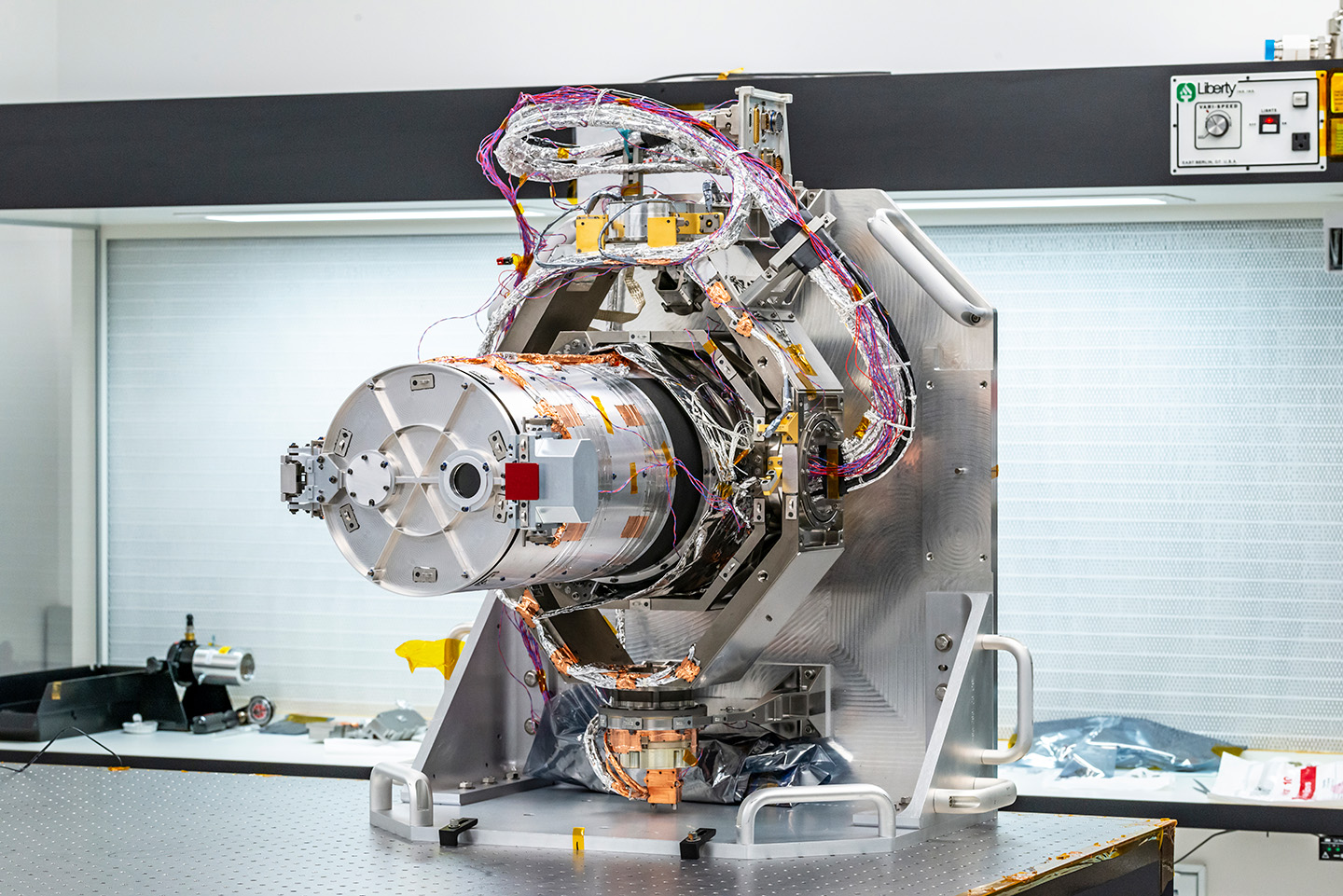Press Release
Johns Hopkins APL Sends Europa Clipper Its Narrow-Angle Camera
After years of work to design, build and run tests, scientists and engineers at the Johns Hopkins Applied Physics Laboratory (APL) in Laurel, Maryland, bid farewell to the Europa Imaging System (EIS) Narrow-Angle Camera (NAC) for NASA’s Europa Clipper mission. The instrument departed APL’s campus on March 31 for a cross-country trip to NASA’s Jet Propulsion Laboratory in Southern California. It safely arrived April 3 in the morning.
The delivery of the NAC marks the latest in the long list of space instruments APL has built over the last 70 years and the last of its instrument deliveries to Europa Clipper. The other components built for Europa Clipper arrived in California last summer and fall, including its propulsion module — the backbone of the spacecraft — its radio frequency module, the spacecraft electrical harness, the Plasma Instrument for Magnetic Sounding (PIMS) instrument, the EIS Wide-Angle Camera (WAC) and major assemblies of the Mapping Imaging Spectrometer for Europa (MISE) instrument.
“APL’s two Europa Clipper cameras are going to provide humanity a front-row seat as we explore the habitability of this mysterious ocean world,” said Bobby Braun, head of the Space Exploration Sector at APL. “A huge congratulations is due to the Narrow-Angle Camera team on completion of this first-of-a-kind instrument that will undoubtedly rewrite the books on our solar system’s ocean worlds. I’m so proud of the amazing members of this team who worked through myriad challenges to achieve this historic delivery.”


